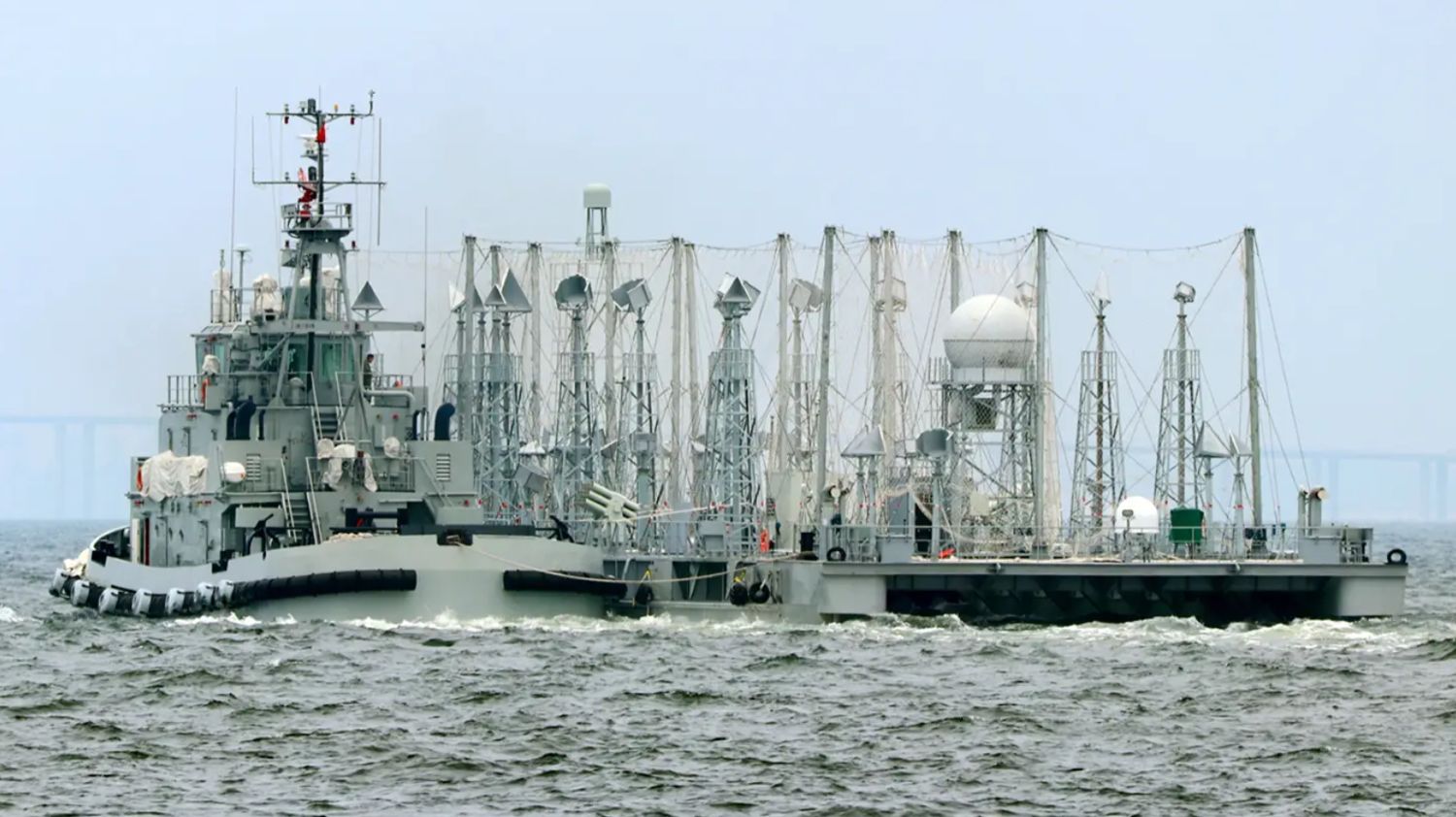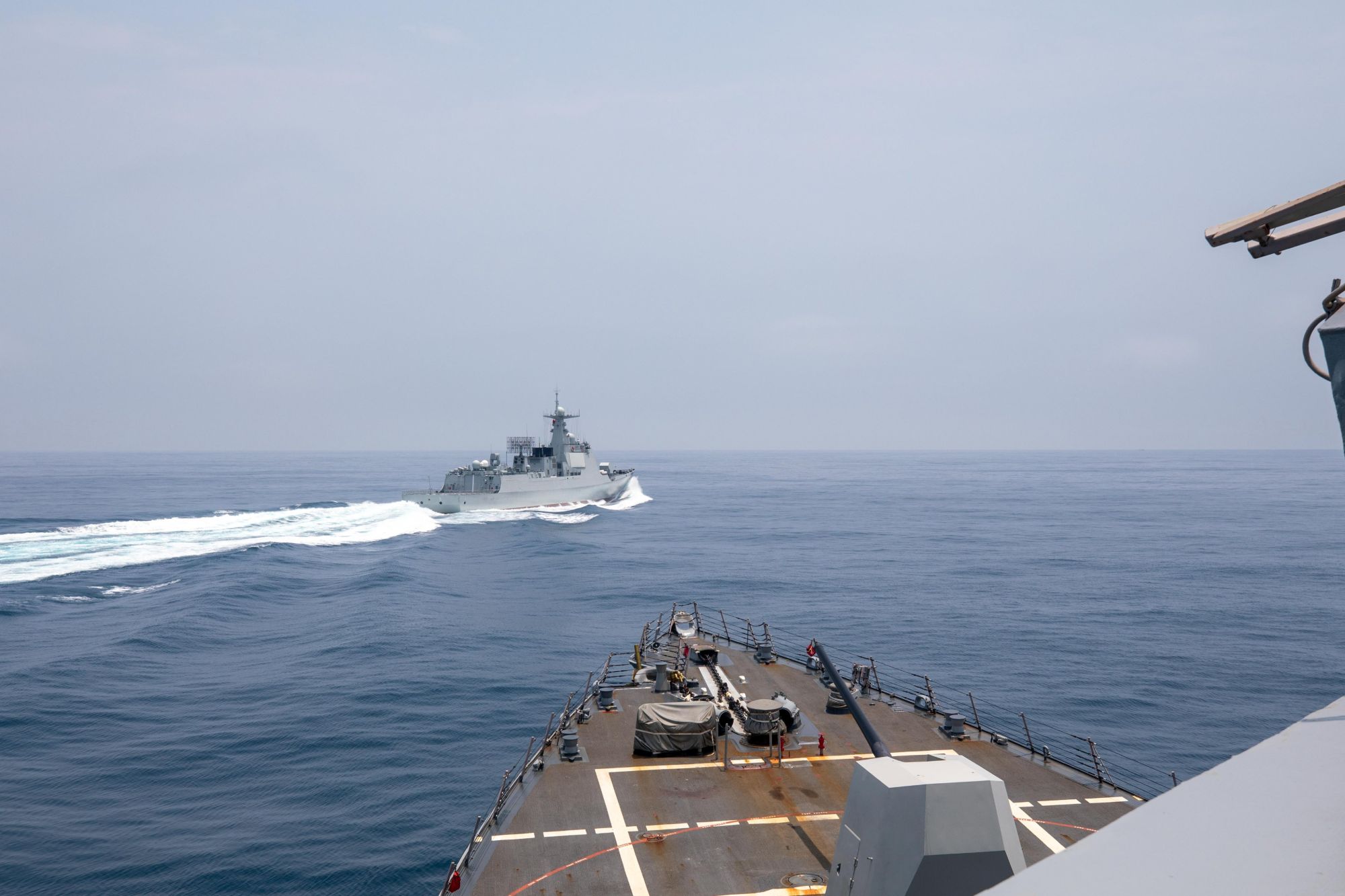As tensions between the United States and China continue to escalate in the Indo-Pacific region, Beijing is developing a powerful radar system capable of tracking multiple targets within a range of 3,500 kilometers—roughly equivalent to the distance to Guam.
MUST READ: Taiwan Will Not Be Another Ukraine Despite China’s Military Superiority; India Can Play A Critical Role
According to the Hong Kong-based South China Morning Post, the radar system currently under development possesses the potential to significantly alter the balance of naval power on a global scale.
Scientists involved in the project have claimed that a Chinese military warship equipped with this advanced radar system would have the capability to detect ballistic missiles from a remarkable distance of up to 4,500 kilometers (2,800 miles).
This detection range is roughly equivalent to the geographical span between southern China and northern Australia.
Chinese researchers believe the radar system is well-suited for deployment on new Chinese warships. The construction of the first system is already underway.
The development of the advanced radar system was disclosed in a peer-reviewed paper published on May 31 in the Chinese-language journal Electric Machines and Control.
In that paper, the Chinese researchers also revealed that the radar system could track multiple targets within a range of 3,500 kilometers, approximately matching the distance to Guam.

In the event of a conflict with China, Guam, as a vital American territory housing a significant US military base, can potentially disrupt Chinese military operations.
Furthermore, the Chinese scientists mentioned that the increased presence of US military forces in Asia, leading to a higher likelihood of confrontations, has spurred China to develop robust radar systems to provide a competitive advantage to its warships.
Over the past few months, numerous incidents have been documented in the region involving aggressive actions by Chinese forces directed toward the United States and its allied forces.
For instance, on June 5, the US military released a video alleging the Chinese navy engaged in an unsafe maneuver in the Taiwan Strait.
The video purportedly shows a Chinese navy ship making a sharp cut across the path of an American destroyer, resulting in the US vessel having to reduce its speed to prevent a potential collision.
Such incidents have raised concerns about the escalating tensions in the area, showing the increasingly aggressive interactions between the two sides.
Capabilities Of The New Radar System
Unlike most warship radar systems that are limited by power requirements and have ranges of only a few hundred kilometers, the researchers claim to have overcome this obstacle, making the radar system suitable for newer ships featuring electric propulsion systems.
As the paper outlines, the new-generation active phased array radar consists of an extraordinary number of transceivers, estimated to be in “tens of thousands.”
This represents a significant increase compared to conventional radar devices, which typically have fewer transceivers.
Each transceiving array unit within the radar system can function as an independent radar capable of sending and receiving signals.
When these units collaborate, they can generate potent pulse electromagnetic signals, reaching up to 30 megawatts in strength.

Such a level of power has the potential to significantly disrupt and disable the electronic systems of any existing warship.
A radar scientist in Beijing told SCMP that installing a 30-megawatt radar on a battleship was once considered science fiction. However, due to growing US military activities in Asia, China is under substantial pressure to develop more advanced radars for its warships.
The scientist stated that with increasingly powerful naval radar systems, China aims to exert greater influence and potentially suppress the US in the South China Sea.
Developing long-range radar systems faces size and power supply challenges. For instance, the world’s most powerful radar, the 32-megawatt AN/FPS-85 in Florida, occupies over 23,000 square meters.
However, technological advances and 5G applications have significantly reduced radar sizes, but power supply remains an issue.
To overcome power supply issues, researchers had to separate the radar from the ship’s power network and use large capacitors as buffers to protect other electronic devices.
The researchers collaborated with China Railway Rolling Stock Corporation (CRRC), known for manufacturing high-speed trains and pioneering the mass production of supercapacitors.
These custom capacitors greatly reduced power shocks, making them suitable for the radar system. Weighing slightly over a ton, the entire power supply system, including capacitors and other components, is compact enough for ship installation.
The radar’s efficient power consumption imposes a constant load of only 235 kilowatts on the ship’s power supply network, manageable by mainstream warship generators.
Nonetheless, if successfully deployed, the reported capabilities of this radar system could significantly enhance China’s naval forces, providing them with an extended reach for early warning and detection, thereby bolstering their defensive capabilities in the region.
- Contact the author at ashishmichel(at)gmail.com
- Follow EurAsian Times on Google News




